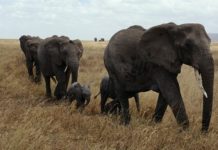For people, being fit involves watching what we eat and getting regular exercise. To be healthy and enjoy a high quality of life, humans work to avoid putting on too many pounds because, for the most part, a fat person is not healthy.
For wintering wildlife, the opposite is true. A healthy bird, rabbit or raccoon is one with an ample amount of blubber — as in whale fat, or animal fat. A healthy whale maintains almost half of its weight in fat. Some healthy birds layer on enough fat to be 25 percent. That’s a lot for an animal that relies on flying to move from place to place. A human with 25 percent fat is considered to be obese.
The reason is simple. Fat is nature’s way of storing energy. Humans long ago learned store up food to ensure having enough calories to survive during the lean times. A few animals do this, too — like squirrels making caches of acorns and other nuts, or like nuthatches that spend a lot of time hiding seeds under the loose bark of trees in the fall and much of the winter prying them out for food. Most animals don’t store food.
They either have to feed on a daily basis to get enough energy to power through their daily routine or they have to store enough fat, as an energy reserve, to have the calories they need to survive. Typically, higher body mass and fat reserves increase chances of survival and, for some species, reproductive success.
Maintaining that fat is especially important for wildlife during winter, when harsh weather conditions can interrupt an animal’s ability to feed and acquire energy. When you or I are faced with cold weather, we either stay inside or layer on extra clothes when we have to go outdoors.
Animals can’t layer on some wool socks or hunker into a warm jacket when the polar vortex descends on them. They have to depend on the hair, fur, feathers or down covering their bodies and that can only do so much.











